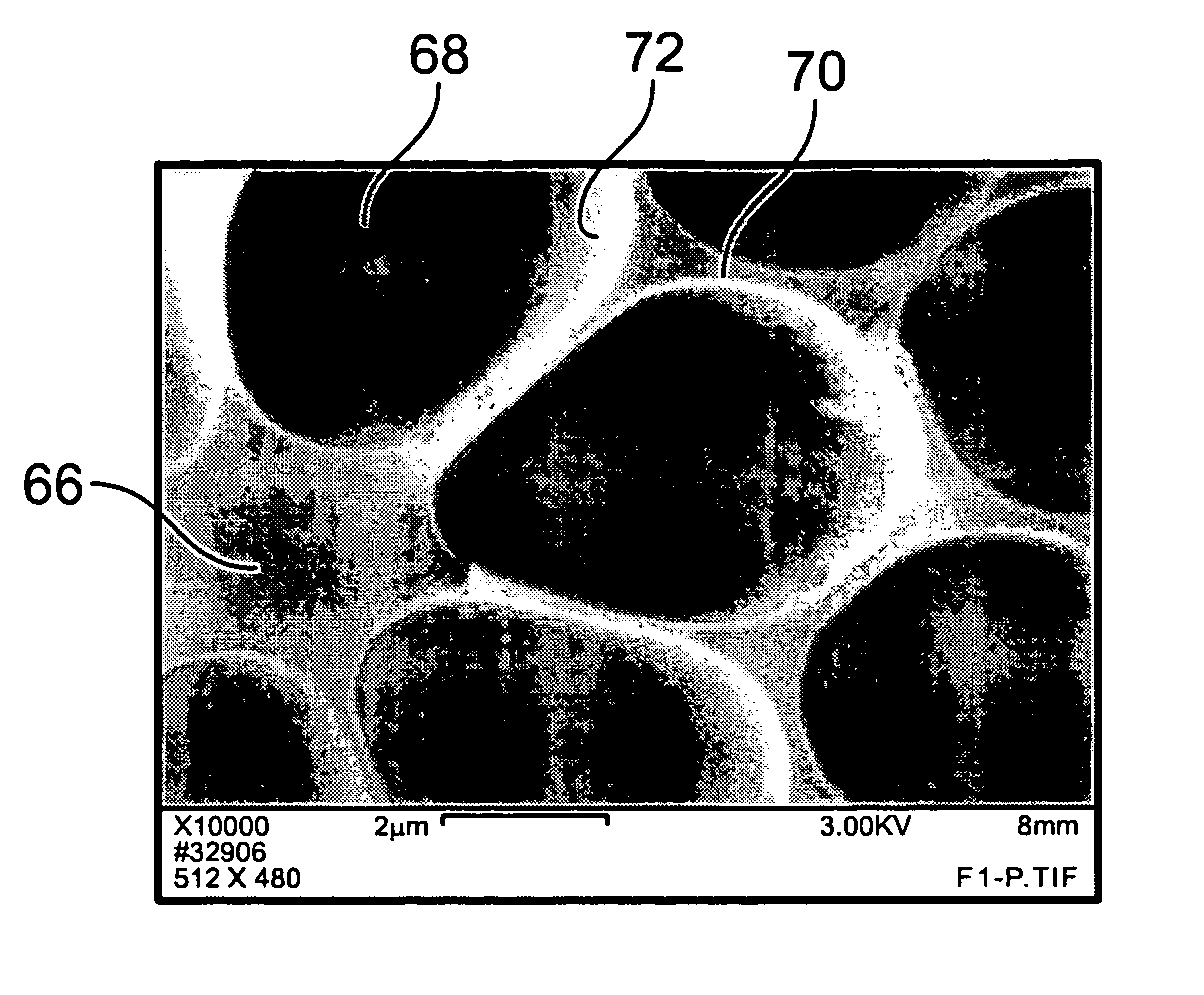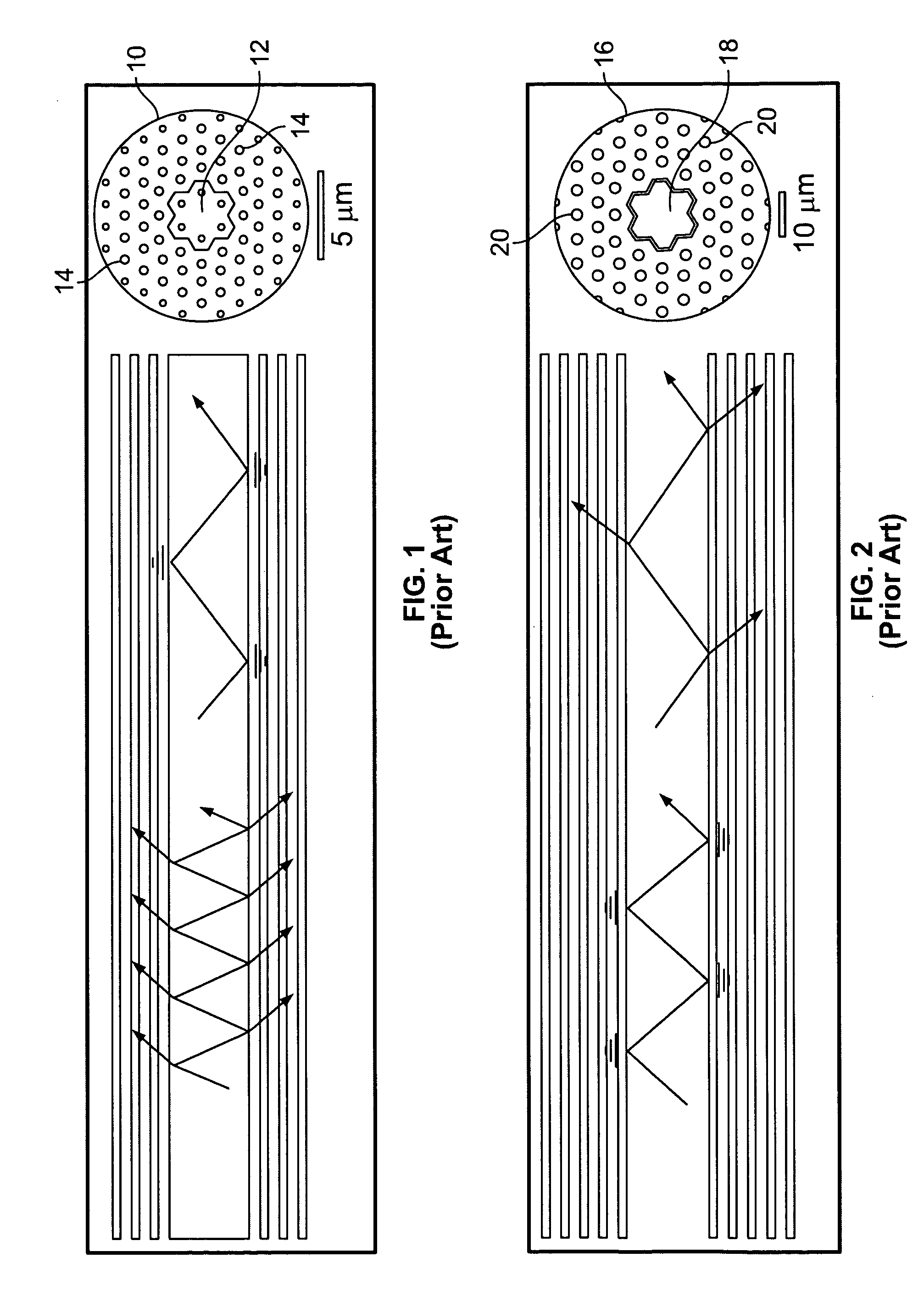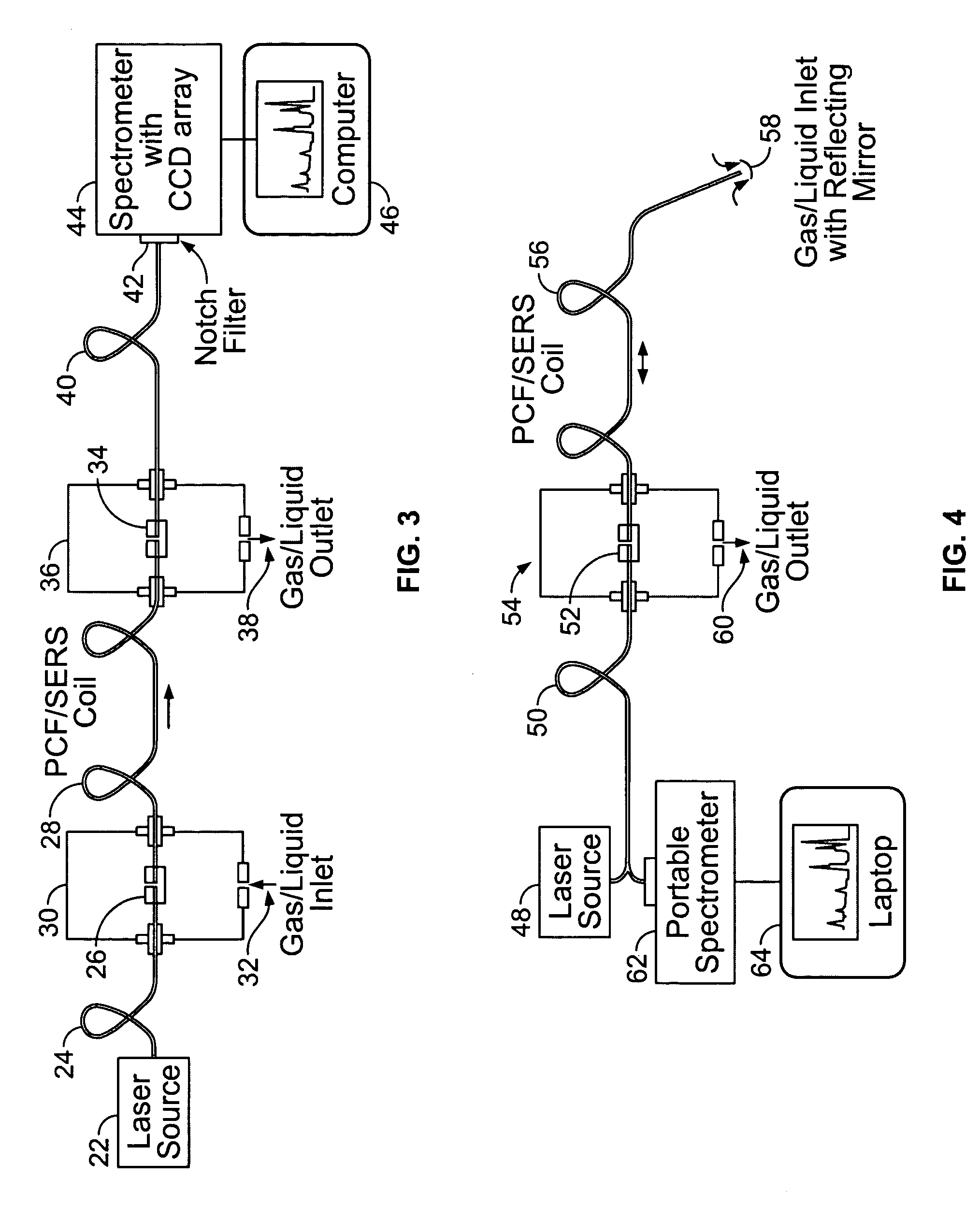Functionalization of air hole arrays of photonic crystal fibers
a technology of photonic crystal fibers and air holes, applied in the field of sensors, can solve the problems of limited detection limits of such sensors, limited fiber length along which the evanescent field and the analyte interact, and small raman cross section, so as to limit conventional raman spectroscopy to identification, rather than sensitive detection
- Summary
- Abstract
- Description
- Claims
- Application Information
AI Technical Summary
Benefits of technology
Problems solved by technology
Method used
Image
Examples
experimental examples
[0042] The following Examples are intended to aid in the understanding of the methods and apparatus of the present invention and are not intended to limit the scope or spirit of the invention in any way.
[0043] Experimental setup. The 532 nm wavelength light beam from a Laserglow D1-532 laser (Laserglow.com, Richmond Hill, Ontario, Canada) was spatially filtered and expanded three times, band-pass filtered, reflected from a Chroma Q540LP dichroic mirror (Chroma Technology Corp., Rockingham, Vt.), and then used to illuminate the back aperture of an Olympus 40× objective, N.A. 0.85 (Olympus America, Melville, N.Y.). The excitation light intensity in front of the objective was about 10 mW. The SERS signal collected from the sample by the same objective passed through the dichroic mirror, was filtered by a Kaiser SuperNotch filter (Kaiser Optical Systems, Inc., Ann Arbor, Mich.), and then was focused by a collimator into a spectroscopic grade multimode fiber having a 400 pm core (Newpor...
example 1
Polymer Adsorption on the Surface of Silicon Wafers
[0047] The effect of ionic strength and pH on adsorption of PAH on the surface of naturally oxidized silicon wafers is illustrated in FIG. 5. PAH was adsorbed from a solution buffered to pH 7 with HEPES or to pH 9 with Trizma at the ionic strengths shown. Data for FIG. 5 were obtained by ellipsometric measurements of thicknesses of dry polymer films of PAH SAMs formed on the planar surfaces. Two characteristic features SAM formation are demonstrated. First, one can see that when adsorption occurred from low ionic strength solutions, increasing the pH of the PAH solutions from 7 to 9 resulted in about a 3-fold increase in the amount of PAH bound to the surface. Second, while the amount of polymer deposited at pH 7 as a function of ionic strength went through a maximum, the maximum was not pronounced at pH 9. Without being bound to a particular theory, it appears that, at ionic strengths higher than a certain value, the Na+ ions comp...
example 2
Immobilization of Silver (Ag) Nanaparticles on a PAH-COATED Surface
[0048] Since adsorption of charged polymers, such as PAH, results in the reversal of surface charge, PAH-treated surfaces can be used to immobilize Ag nanoparticles having negative charges at pH 7. FIGS. 6 and 7 are scanning electron micrographs of silver nanoparticles attached to a PAH SAM. The PAH SAM of FIG. 6 was preadsorbed from a 10 mM HEPES solution at pH 7, and the PAH SAM of FIG. 7 was preadsorbed from a 10 mM Trizma solution at pH 9, neither solution containing added NaCl. Silver nanoparticles were allowed to adsorb onto each PAH SAM from a colloidal suspension of 1012 particles / ml at pH 7 for 4 hours. As can be seen in the micrographs, a significantly greater number of particles adsorbed to the PAH SAM formed at pH 9 (FIG. 7) than to the PAH SAM formed at pH 7 (FIG. 6). Table 2 shows that there is direct correlation between the density of adsorbed nanoparticles and the amount of preadsorbed PAH. Table 2 a...
PUM
 Login to View More
Login to View More Abstract
Description
Claims
Application Information
 Login to View More
Login to View More - R&D
- Intellectual Property
- Life Sciences
- Materials
- Tech Scout
- Unparalleled Data Quality
- Higher Quality Content
- 60% Fewer Hallucinations
Browse by: Latest US Patents, China's latest patents, Technical Efficacy Thesaurus, Application Domain, Technology Topic, Popular Technical Reports.
© 2025 PatSnap. All rights reserved.Legal|Privacy policy|Modern Slavery Act Transparency Statement|Sitemap|About US| Contact US: help@patsnap.com



